Taking action on fashion and the climate crisis
We are facing a climate crisis, and the effects are already being felt all across the world. From unprecedented heatwaves to deadly flash floods, rising sea levels to biodiversity loss, it is clear that climate change is not a future threat, but a present reality.
The fashion industry has a devastating impact on the planet, and the most vulnerable workers in the fashion system are often at disproportionate risk of experiencing these impacts first-hand. Throughout the entire fashion supply chain, natural resources are extracted, habitats are exploited, toxic emissions are produced, water is polluted and waste is carelessly dumped.
Fashion Revolution is now calling on brands, retailers, producers, policymakers, educators, designers, students, journalists and citizens to fight back.
We know that this issue can feel overwhelming and upsetting. That is why it’s more important than ever that we come together as a community to take action. As individuals, we cannot solve the climate crisis alone, but we have the power to support each other in this global movement and make a positive difference.
TAKE ACTION
You can download a What’s In My Clothes? poster, snap a selfie and share it on Instagram, tagging the brands you’re wearing to hold them accountable. Click here for some creative inspiration.
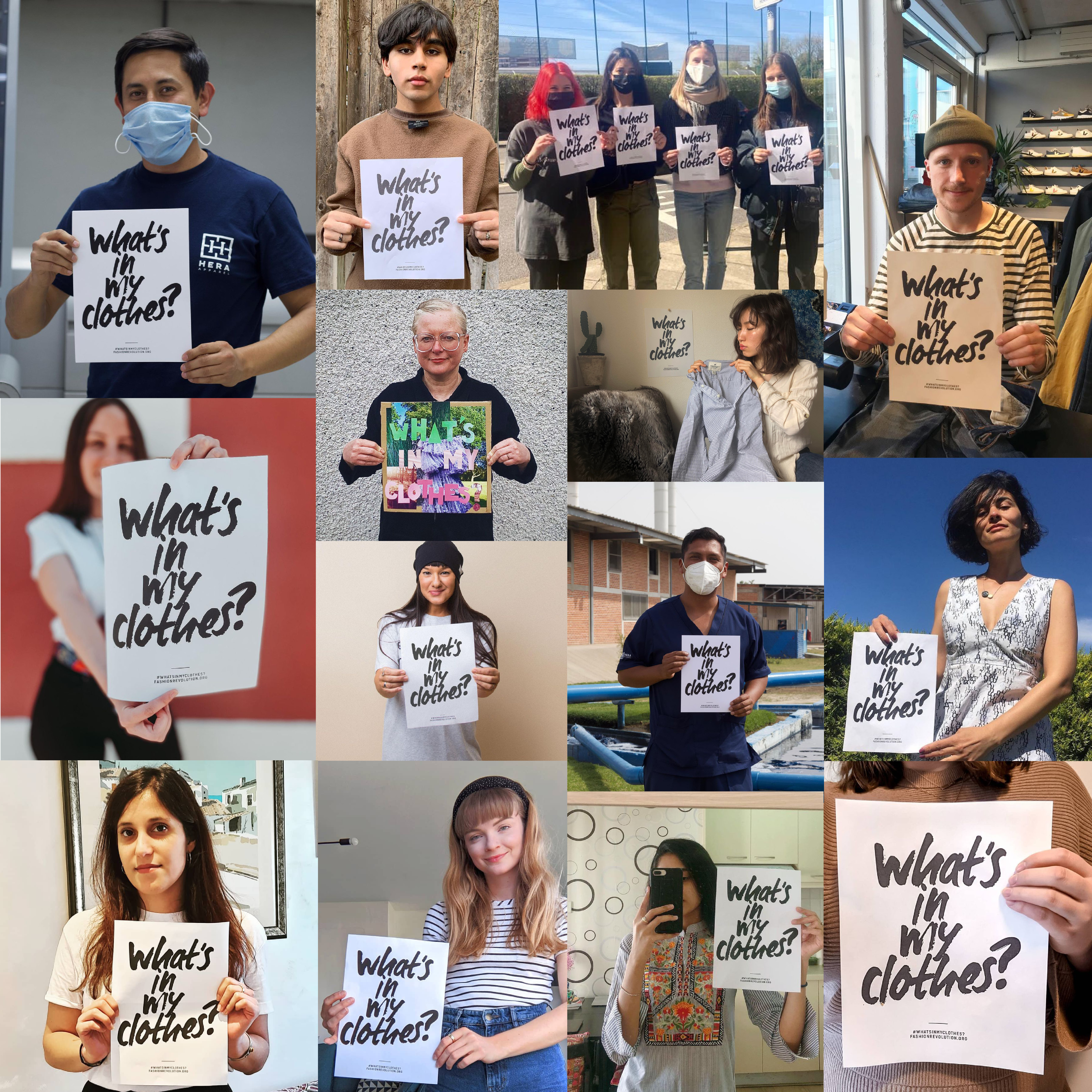
Brands and retailers listen closely to their customers, so one of the most effective ways to share your concerns is by leaving them a product review on their website or a comment on their social media posts.
Copy and paste the paragraph below in your message:
I am your customer, and I love your style. However, I would like to know more about what your products are doing to the planet. Please measure and publish the environmental impacts throughout your supply chain. This is a vital first step to take accountability for your footprint on the planet and take action on the climate crisis. Can you tell me #WhatsInMyClothes?
Use your voice to demand accountability on fashion’s environmental impacts. One of the most important actions you can take is by contacting your local elected representative – remember, they work for you! In the UK, you can find contact details for your MP or MSP at writetothem.com.
Copy + paste the paragraph below in your email:
Dear [name]
We need to take action on the climate crisis, and this includes transforming the fashion industry.
Clothing production releases billions of tonnes of carbon emissions, pollutes waterways, destroys ecosystems, and sends a truckload of clothing and textiles to be landfilled or incinerated every single second. I want the clothing I buy and wear to be made in a sustainable manner and for brands to take responsibility for their environmental footprint.
The government should implement regulations to ensure all companies are responsible for the negative impacts they have throughout their supply chain.
What are you doing to address this?
Sincerely,
[name]
Our power is in our collective, so if you’re feeling overwhelmed by the climate crisis, join a community to work together on the issues that matter to you.
Climate Action, Extinction Rebellion, Greenpeace and Friends of the Earth have links to hundreds of local groups across the UK that you can join. Reddit and Facebook are also great places to search for and get involved with local climate communities.
Fashion Revolution also has 90+ teams of fashion activists all around the world. You can connect with your country here to get involved in local community action. Make sure to check out our events page too for local listings.
None of us actively seek to wear clothes that destroy the planet. But what we wear matters in the journey to building a more sustainable fashion system. Here are some ideas for changing your relationship with your wardrobe:
- Try alternative ways to have fun with fashion, like renting, swapping, taking on a second-hand shopping challenge, supporting small independent designers or even making your own clothes.
- If you can, consider quality over quantity when it comes to your next fashion purchase. Buy that jacket because you love it, not just because it’s on-trend. Slow down and scale back on your shopping.
- You can also scrutinise the brands you buy from, asking them for more information about materials, packaging, waste and more before you part with your hard-earned cash.
- Remember, the most sustainable garment is the one already in your wardrobe, so you can extend the life of your clothes by wearing and mending them for as long as possible.
- Read Loved Clothes Last by our co-founder Orsola de Castro for a complete guide to caring, repairing, upcycling and more.
Our 4-week online course ‘Fashion’s Future and the Sustainable Development Goals’ dives deep into the global fashion industry’s social and ecological footprint in connection to the UN SDGs.
Register now for free to start learning directly from the experts and discover how to take action on your knowledge.
“Fashion conserves and restores the environment. It does not deplete precious resources, degrade our soil, pollute our air and water or harm our health. Fashion protects the welfare of all living things and safeguards our diverse ecosystems.”
Sign our Manifesto for a Fashion Revolution, joining over 13,500 other people to call for radical change in the way that our clothing is produced, sourced and consumed.
Sign our manifesto
How does fashion impact the climate?
According to Fashion on Climate, the fashion industry contributes approximately 2.1 billion tonnes of greenhouse gas emissions in a single year, equivalent to 4% of all global emissions. This staggering figure is comparable to the annual GHG emissions of France, Germany and the United Kingdom combined. These estimates are based on data from 2018, but the industry is expected to continue to grow in the future.
This means that if our efforts to reduce fashion’s impact are not rapidly accelerated within the next 10 years, emissions are predicted to rise to 2.7 billion tonnes a year by 2030.
The colossal carbon impact of clothing happens at every stage of the fashion supply chain and product life cycle, but 70% of fashion’s emissions originate from upstream activities such as raw material production and processing. Despite this, most major brands still fail to take basic steps towards environmental due diligence at their supplier sites. Generally speaking, dyeing and finishing, yarn preparation, and fibre production tend to be the most carbon-intensive phases. These processes are massively underrated by fashion brands, who mostly only account for the emissions from their own operations, like transport and retail.
Fashion’s impact on the climate crisis is not just about carbon emissions, but water, chemicals, deforestation, textile waste, microplastics and more.
As our 2021 Fashion Transparency Index found, the world’s largest brands and retailers talk a lot about their sustainability efforts, but there remains a lack of transparency on actions and outcomes across key environmental indicators. If brands don’t measure and disclose their data throughout all operations, we cannot hold them accountable to their climate targets. The entire fashion industry needs to be bolder and more transparent about what they’re doing to address the scale of the global climate challenge, especially when it comes to environmental impacts in the supply chain and the consequences of unsustainable production and consumption.
Environmental data collection is standard practice in many industries and, given the social and environmental ramifications of the climate crisis, this is an urgent issue for the global fashion industry considering its significant impacts on the planet. Brands cannot demonstrably reduce their environmental impacts if they do not track and share this data to enable better understanding among all stakeholders and the public on what work is being done and where more effort is needed.
Ultimately, we need to see tougher legislation internationally that mandates transparency and environmental due diligence, so that brands have no choice but to take action on conserving and restoring the environment throughout their supply chain.
Climate justice and social justice are interconnected, as climate change will continue to have devastating socioeconomic impacts on people across the world. We believe that human rights and the rights of nature must be addressed in tandem, and for the fashion industry, this means radically transforming the dominant narrative of overproduction and overconsumption, and the business model built on exploitation, extraction and waste.
We know the science. We have the solutions. The time is now for climate action.
We cannot continue to extract dwindling resources from an already stressed natural world, pollute our land and our oceans, fall far short of climate change targets and dump our waste on the shoulders of countries we have culturally depleted. Nor can we continue to allow big business to profit whilst supply chain workers struggle to live in dignity.
As fashion lovers, fashion consumers and most importantly, global citizens, it’s time to come together to slow down the fashion system and prioritise real sustainability for generations to come.
Further reading and resources
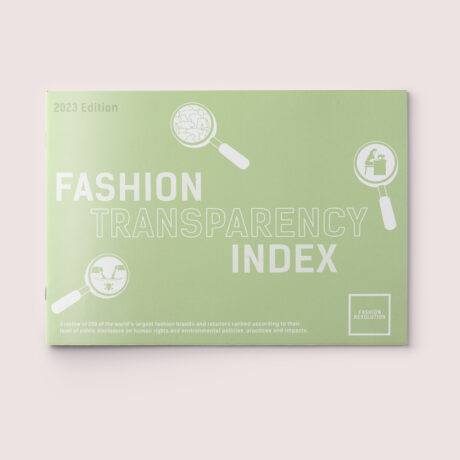
Fashion Transparency Index
Discover what major fashion brands and retailers are disclosing about their efforts to address the climate crisis in the Fashion Transparency Index 2023.
DOWNLOAD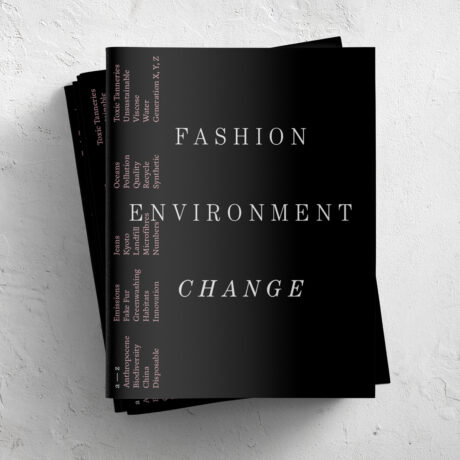
Fashion Environment Change
This zine provides an A-Z of the fashion industry’s thorny relationship with greenhouse gases, ocean plastics, and textile pollution, from the Anthropocene to Gen Z
READ NOW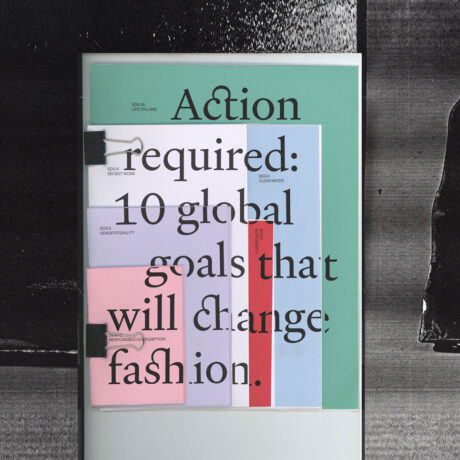
Action Required
This zine is an investigation of the fashion industry’s relationship with the United Nations’ Sustainable Development Goals, including Climate Action.
READ NOW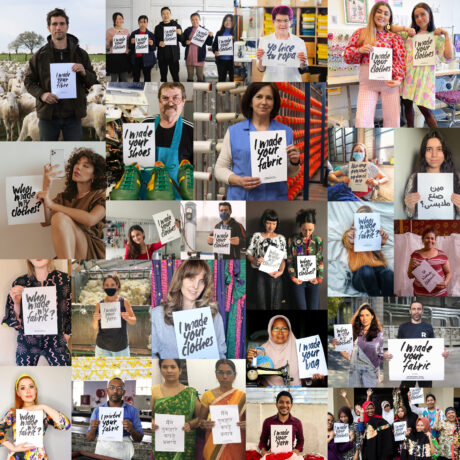
Key organisations
Connect with a range of leading organisations, individuals and initiatives fighting for a more sustainable future.
DISCOVER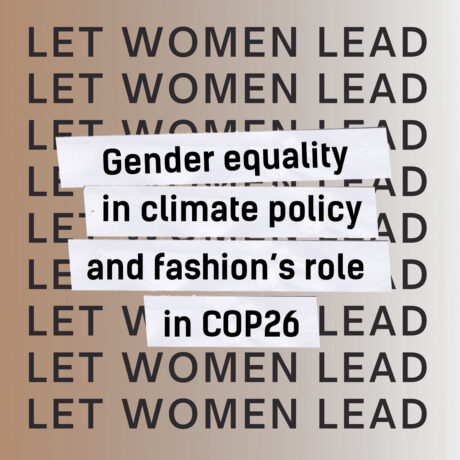
Fashion Revolution blog
Read our latest educational and inspiring blog posts about fashion's relationship with the environment, from toxic waste to synthetic materials.
EXPLORE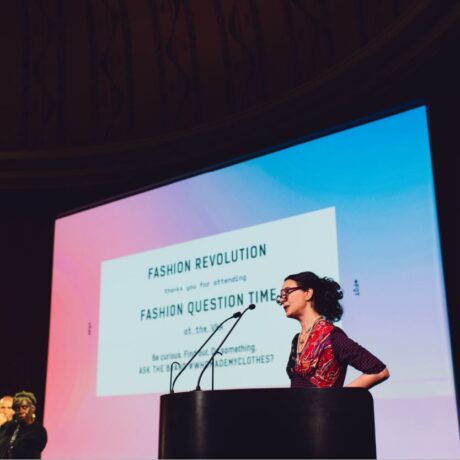
Watch on Youtube
Watch a range of informative content on the Fashion Revolution Youtube channel and fashion and the climate crisis.
EXPLORE
Weekly newsletter
Subscribe to the Fashion Revolution newsletter for weekly sustainable fashion reading lists and calls to action.
SIGN UP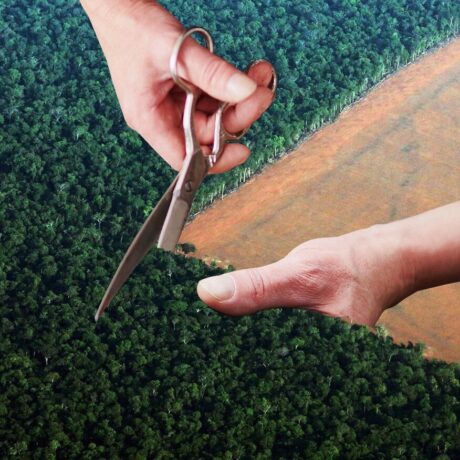
Social media activism
Connect with us on Instagram for daily content about sustainable fashion and learn how to take action on social media and beyond.
FOLLOW
